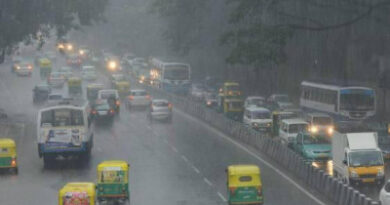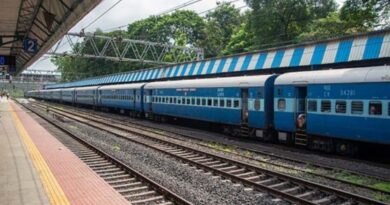“From National Security to Economic Impact: India’s Import Restrictions Unraveled”
India’s Controls on Imports
India has recently announced strict controls on the import of personal computers, laptops, tablets, and other electronic devices. This is part of a larger trend of increasing state control over various aspects of the economy.
- The government has implemented a quadruple tax collection at source (TCS) from 5% to 20% on transactions under the liberalized remittance scheme (LRS).
- These measures increase friction in using the LRS facility and may discourage some people from utilizing it.
- Credit card spending has also been restricted with an increased application of TCS.
- Several other examples of state restrictions include the sudden ban on non-basmati rice exports and restrictions on solar panel imports.

Import Restrictions and Public Procurement
The government imposed restrictions on imports from countries sharing land borders with India for public procurement unless suppliers were registered with the Indian government. However, this restriction did not apply to public sector undertakings (PSUs).
- PSUs were exempted from these import restrictions for public procurement and public-private partnerships (PPPs).
- This exemption raises questions about who these import restrictions apply to and how they are rolled out.
- The Ministry of Finance issued an order in 2020 regarding these import restrictions.
Laptop and Tablet Issue
Initially, the objective behind restricting laptop and tablet imports was stated as promoting domestic manufacturing. However, by the next day, national security became the primary focus.
- Total imports of restricted goods amounted to $8.8 billion in the last financial year, with 58% coming from China.
- The shift towards national security raises questions about the specific target of these restrictions and their implications.
Trust in Government and Complex Challenges
When national security is invoked, Indians tend to trust their government. However, the challenge of national security extends beyond potential threats planted by the Chinese.
- Observations on social media have highlighted the presence of Chinese-made CCTV cameras in sensitive Indian facilities.
- These cameras are networked to a server that stores information, raising concerns about data security.
- National security is a complex issue that goes beyond physical threats and includes technological vulnerabilities.
In summarized way can say that recent state controls on imports, including restrictions on personal electronic devices and other goods. It highlights exemptions for public sector undertakings in import restrictions for public procurement. The focus then shifts to the laptop and tablet issue, where the objective initially stated as promoting domestic manufacturing changes to national security concerns. The transcript emphasizes the complexity of national security challenges beyond physical threats, such as technological vulnerabilities.
The Impact of Opening Up Imports
This section discusses the impact of opening up imports in India and the transformation it brought to the automobile industry.
Opening Up Imports
- Prior to the 1991 reforms, India had strict restrictions on automobile imports.
- The only available options were Ambassador, Fiat/Padmini cars, and Bajaj/Lambretta scooters.
- After opening up to global competition, India became one of the world’s biggest exporters of automobiles.
- Two generations of Indian consumers now have access to a wide range of choices in automobiles and computers.
Restrictions on Electronic Goods Imports
This section highlights the failures of pre-1991 license quota Raj in restricting electronic goods imports.
License Quota Raj for Electronics
- During the Indira era, there were severe restrictions on importing electronic goods.
- State governments set up their own public sector units (PSUs) to manufacture electronics.
- Imported electronics were scarce, and people relied on NRIs or civil servants returning from abroad for such goods.
Shift towards Domestic Manufacturing
Section Overview: This section discusses the shift towards domestic manufacturing and reducing import dependence.
Incentivizing Make in India
- With recent reforms, there is a focus on reducing imports and promoting domestic manufacturing.
- To incentivize make in India, duties on parts will be reduced so that more components can be imported for assembly.
- However, there is a concern about some individuals misusing this by importing whole devices as parts.
Draconian Restrictions on Foreign Exchange
This section highlights the stringent restrictions imposed on foreign exchange during pre-reform times.
Restrictive Foreign Exchange Policies
- Restrictions on foreign exchange were even more severe than those on electronics.
- Indians were limited to carrying a maximum of eight dollars, which was later increased to 20 dollars.
- Credit cards were only valid in India and Nepal, making it difficult to rent cars or make payments abroad.
Listing Equipment in Passports
This section discusses the listing of equipment and money in passports during pre-reform times.
Passport Documentation
- Money taken from RBI and equipment like laptops and tape recorders were listed in passports.
- Mobile phones also had to be listed for a few years after their introduction.
- These pages from old passports serve as a reminder of the restrictions faced by travelers before the reforms.
Post-Reform Changes: Global Currency Access
This section highlights the post-reform changes that allowed Indians access to global currency.
Indian Credit Cards and Global Currency
- Post-reforms, Indian credit cards gained acceptance globally, enhancing India’s reputation.
- Indians could now travel with ease and use credit cards for car rentals and other transactions abroad.
Impact on India’s Reputation
This section discusses how the reforms contributed to enhancing India’s global reputation.
Enhancing India’s Prestige
- The decision by the Vajpayee government to allow Indians access to global currency was an epochal reform.
- It greatly enhanced India’s global reputation, prestige, and self-respect as traveling Indians.
This section discusses the connection between elections and foreign exchange reserves in India.
Elections and Reformist Decisions
- Former Prime Minister Chandra Shekhar mentioned a conversation where he expressed surprise at India’s improved foreign exchange situation. Previously, India had to send gold to Switzerland due to a shortage of foreign exchange.
- The liberalized remittance scheme allowed Indian citizens to remit foreign exchange, leading to significant growth in India’s formal exchange reserves.
- Over the years, India’s forex reserves have grown from $113 billion to over $600 billion due to various reforms and increased confidence in the country’s economy.
This section explores the negative impact of import controls on trade and highlights the importance of trade for economic growth.
Import Substitution and Trade
- Import substitution, which reduces trade by focusing on domestic production instead of imports, was a flawed idea in pre-reform India.
- Trade plays a crucial role in the growth of nations, including China and India. Lifting restrictions on foreign direct investment (FDI) has been part of India’s reform process.
- Some outdated ideas, including import controls, are resurfacing despite the progress made through reforms.
This section emphasizes that bad ideas can gain momentum regardless of their negative consequences.
The Persistence of Bad Ideas
- Victor Hugo once said that no one can stop a bad idea whose time has come. Unfortunately, bad ideas sometimes gain popularity even when they harm foreign relations or hinder economic progress.
FAQs
- What is the Liberalized Remittance Scheme (LRS)? The Liberalized Remittance Scheme (LRS) is a facility that allows resident individuals in India to remit money abroad for various purposes, such as travel, education, medical treatment, or investment.
- How are state-imposed restrictions affecting international trade? State-imposed restrictions can have both positive and negative effects on international trade. While they may protect domestic industries and address security concerns, they can also hinder global partnerships and economic growth.
- What is the significance of the shift towards domestic manufacturing? The shift towards domestic manufacturing aims to reduce import dependence and boost the Indian economy. By incentivizing local production, the government seeks to strengthen self-sufficiency and create job opportunities.
- How has the opening up of imports impacted India’s automobile industry? Opening up imports transformed India’s automobile industry by providing consumers with a wide range of choices. Before reforms, the options were limited, but after the liberalization, India became one of the world’s major exporters of automobiles.
- What were the consequences of the pre-reform era’s restrictive foreign exchange policies? The pre-reform era’s restrictive foreign exchange policies limited Indian travelers’ access to global currency and hindered their ability to engage in international transactions.



